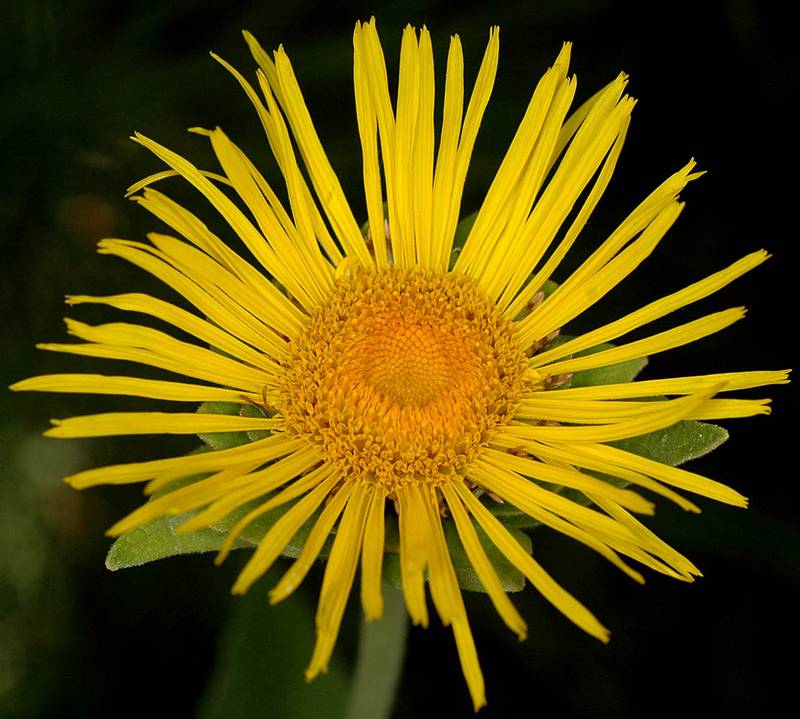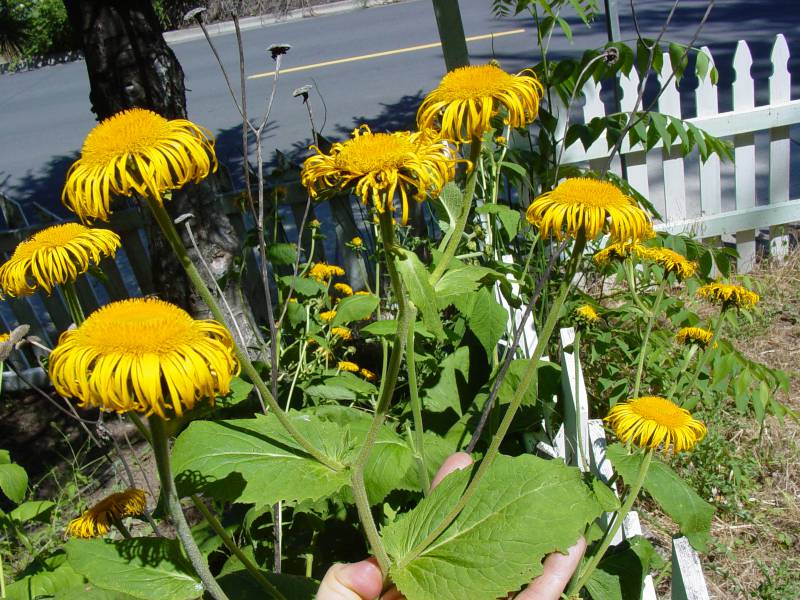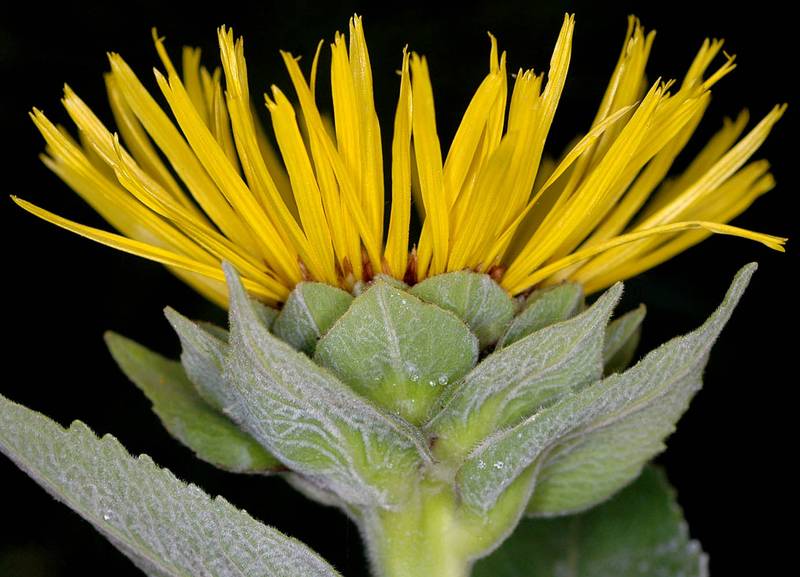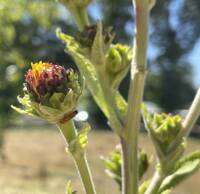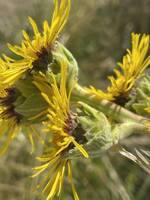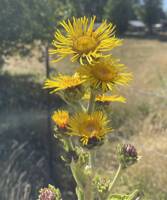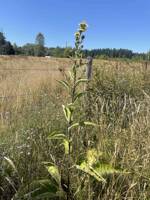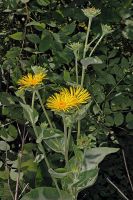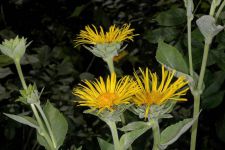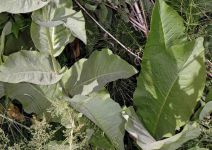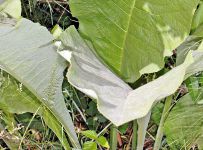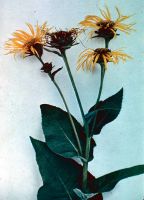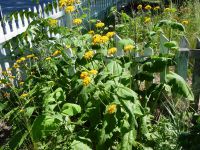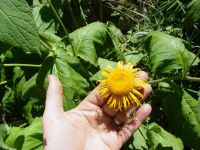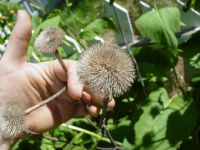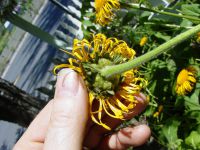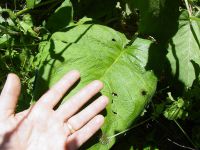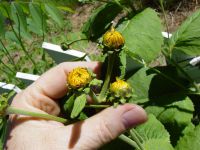Distribution: Known in Washington from a single location east of the Cascades crest in Washington; British Columbia to California, also in central and eastern North America.
Habitat: Roadsides, fields, wastelots, and other disturbed open areas at low elevations.
Flowers: June-September
Origin: Introduced from Asia
Growth Duration: Perennial
Conservation Status: Not of concern
Pollination: Bees, flies, beetles, wasps
Coarse perennial herb, up to 2 m. tall, the stem finely spreading-hairy.
Leaves irregularly and shallowly dentate, densely velvety beneath, the lower elliptic and long-petiolate, the blade up to 5 dm. long and 2 dm. wide, the upper leaves becoming reduced, ovate, sessile and cordate-clasping.
Heads few, pedunculate, large, the disk 3-5 cm. wide; involucre 2-2.5 cm. high, imbricate, the outer bracts broad, herbaceous, and densely short-hairy, the inner bracts narrow, papery and glabrous; ray flowers pistillate, slender, yellow, and over 1 cm. long; disk flowers yellow and perfect; pappus of capillary bristles.
Achenes slender, glabrous, 4-angled.
Publication: Sp. Pl. 2: 881. 1753.
PNW Herbaria: Specimen records of Inula helenium in the Consortium of Pacific Northwest Herbaria database
WA Flora Checklist: Inula helenium checklist entry
OregonFlora: Inula helenium information
E-Flora BC: Inula helenium atlas page
CalPhotos: Inula helenium photos

